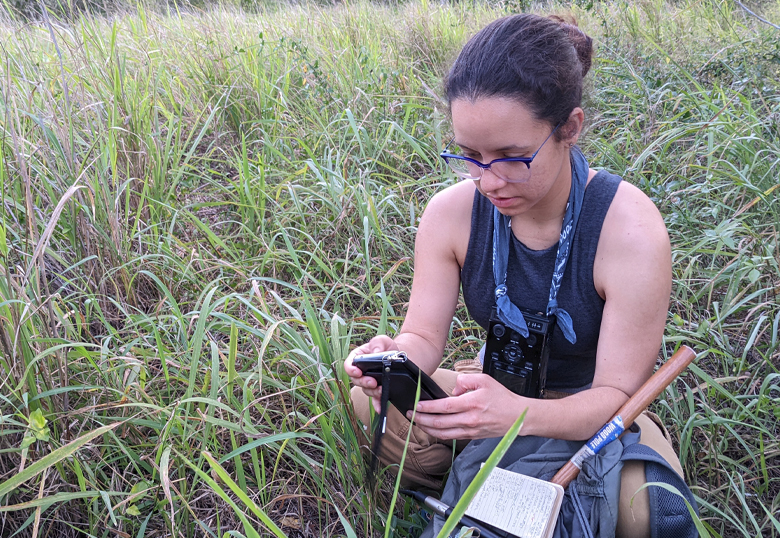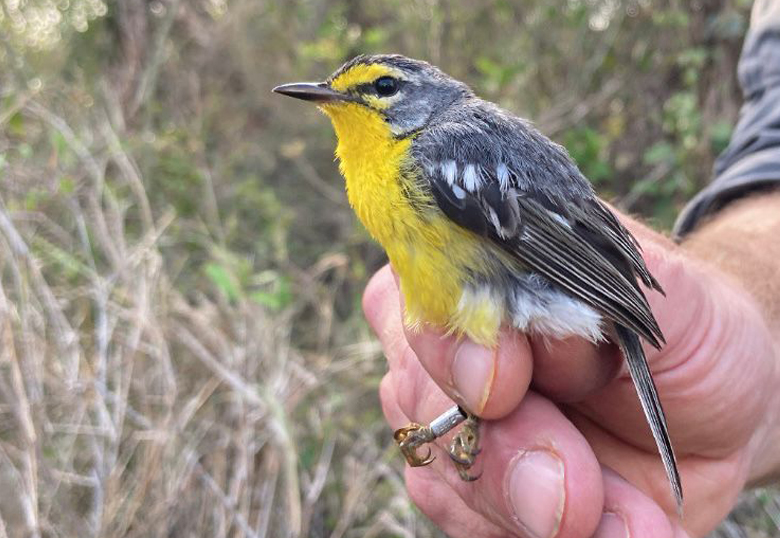If you’ve ever wondered why songbirds are seemingly much busier in the early morning hours, a new paper out of the University of Lethbridge explains the birds aren’t just singing their hearts out to welcome you to the day — rather, they’re warming their voices up for their important morning performance.

PhD student Juleyska Vazquez Cardona (MSc ’22), working with Dr. David Logue out of the Department of Psychology, says that birds warm up their voices just like human singers would before a performance. The phenomenon is known as the dawn chorus, where songbirds sing intensely during the early morning before tapering off as the morning progresses.
“There are many hypotheses as to why this happens and one of those is that they are warming up their voices during that period, so our study was to look at how well they sing their songs using some performance measures, and then how their performance changes throughout the morning,” says Vazquez Cardona.
They studied the Adelaide’s warbler, a small songbird found in a dry forest in southwestern Puerto Rico. Logue taught at the University of Puerto Rico for five years prior to coming to ULethbridge in 2015 and is still an adjunct professor there. Vazquez Cardona earned her Bachelor of Science in her home country before coming to Canada to complete her master’s and now her PhD.

The group started recording the birds prior to sunrise just before they start singing and then recorded continuously throughout the dawn chorus, where the birds sing intensely for about 20 to 25 minutes. The recording then continues for another hour or so after, giving the researchers a full data set of measures for the performance.
Using more detailed metrics than in previous studies, they were able to identify performance changes in the warblers as they progressed through their warm-up. These measures include recovery time, voiced frequency modulation and unvoiced frequency modulation.
“The measures of performance are basically about how fast the bird can sing,” says Logue. “You can hear these notes in rapid succession, and we have three different ways of measuring how fast they sing. For example, as their performance improves, the silent gaps between each note get shorter and shorter. The performance is lowest first thing in the morning, increases rapidly during the dawn chorus and then levels off afterward.”
A bird’s song isn’t for entertainment, rather it’s thought to be a call to potential mates (only males sing during the breeding season) and a warning to other males that this is their territory. Logue describes the warbler as a fiercely territorial bird that will fight other males multiple times throughout the day to establish its territory.
The warm-up, they believe, primes the warbler to maximize its performance. The researchers are looking to strengthen the warm-up hypothesis by linking the vocal performance of the sender with how competing birds and females respond as receivers of these songs.
“We found that singing at a high rate through the dawn chorus increased the birds’ performance in both recovery time and unvoiced frequency modulation,” says Vazquez Cardona. “Now, we want to take this further and look at the function of a strong vocal performance. One thing we’ll be looking at is how they use their vocal performance relative to the time of an aggressive encounter with a neighbour bird who is trying to get into that territory. We also need to figure out whether the females prefer high performance songs.”
The study, Vocal performance increases rapidly during the dawn chorus in Adelaide’s warbler, was published in Behavioral Ecology, the official journal of the International Society for Behavioral Ecology and is available here.
